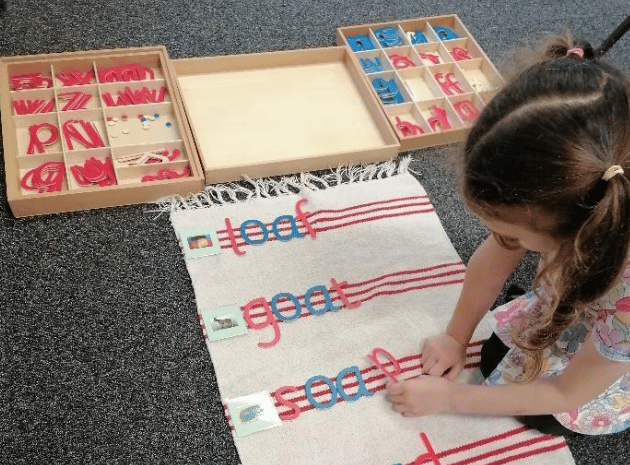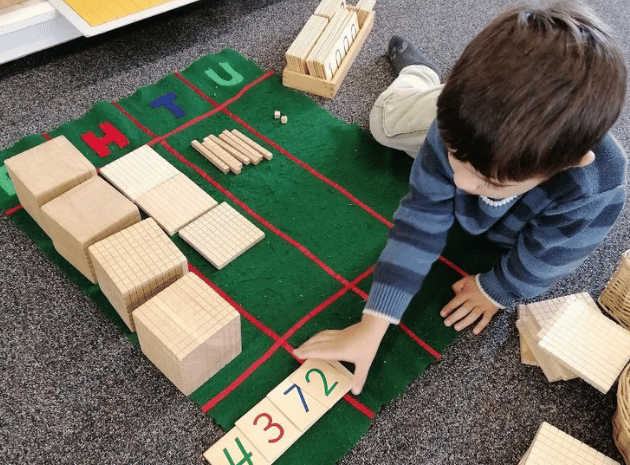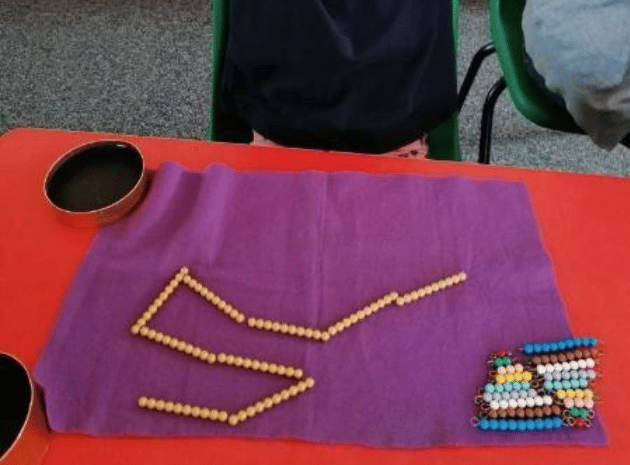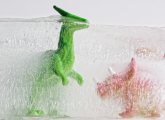Maria Montessori was a woman ahead of her time in so many ways. Many of her ideas and teachings are embedded within the characteristics of effective teaching and Early Learning Goals, which in turn form an inherent part of learning in a Montessori environment.
A hands-on approach is key. In any Montessori classroom, including ours, all learning begins with manipulating physical objects, which helps the children to develop a concrete understanding before moving on to more abstract concepts.
The equipment is beautifully crafted and enticing to look at and touch, generally made of wood and natural products. It’s often colour coded to add an extra sensory dimension to support learning.
The children can’t wait to ‘have a go’; they are active learners who learn through playing and exploring.
The layout of the Montessori classroom is instantly recognisable. Equipment is arranged by area of learning and in sequential order of complexity so that the children quickly learn where to find everything.
All our shelves are at a low level so that the children can self-access the equipment and upon completion of each activity, they are encouraged to return the equipment to the correct place on the shelf ready for the next child to use.
The freedom to move, choose and repeat develops independence, self-regulation, and the confidence to try new activities in a relaxed manner. Even the youngest children feel in control of their own learning.

The Montessori language equipment helps the children to focus on one specific area of learning at a time. Learning to form letters and to spell, for example, can be practised in isolation if a child is not yet physically ready or is reluctant to write, by using wooden letters.
These, with consonants in one colour and vowels in another, give the children the chance literally to build words based on the sounds they can hear.
They start with CVC words, listening for the first, middle and last sounds and go on to build CVCC or CCVC words and later, words with two or three-letter digraphs. Using this simple equipment, they have the freedom to self-correct, which they enjoy and which really builds their confidence.

The Bank Game is a personal favourite of ours for teaching numeracy. It is so clever in design and can be used in many ways. We return to it time after time to introduce new concepts, well beyond the Early Years.
The little ones enjoy handling it, counting with it to gain a deeper understanding of the numbers up to ten, and exploring the decimal system in a hands-on and concrete manner. They quickly become adept at handling larger numbers, counting well beyond twenty, and able to recognise patterns of the counting system.
The children love being able to hold a unit cube in one hand and a thousand cube in the other and really get a good idea of the relationship between the quantities. Parents frequently tell us that they have always struggled with operational maths and wish that they had had access to equipment like this when they were young.
We often hear, “We were told what to do but never shown why – if I had been able to learn in this way, then I would have understood!”.

Beads and blocks are used throughout Montessori maths learning. Again, the ability to touch and move equipment when counting and doing operational maths is fantastic.
We are particularly fond of a set of colourful beads strung on wire in different amounts – called the ‘short bead stair’. This is used for counting, number bonds, doubling and halving and later, for times tables.
Louise Self is co-founder and tutor at The Learning Tree – a North Essex based Montessori Centre supporting primary-aged home-educated children with maths and literacy tuition.

STEM learning through play
Editors picks

Physical activity – How to make the most of movement
Editors picks
